
The Underground Railroad was a network of secret routes and safe houses established in the United States during the early to mid-19th century. It was used by enslaved African Americans primarily to escape into free states and Canada. The scheme was assisted by abolitionists and others sympathetic to the cause of the escapees. The enslaved who risked escape and those who aided them are also collectively referred to as the "Underground Railroad". Various other routes led to Mexico, where slavery had been abolished, and to islands in the Caribbean that were not part of the slave trade. An earlier escape route running south toward Florida, then a Spanish possession, existed from the late 17th century until approximately 1790. However, the network now generally known as the Underground Railroad was formed in the late 18th century. It ran north and grew steadily until the Emancipation Proclamation was signed by President Abraham Lincoln. One estimate suggests that, by 1850, 100,000 enslaved people had escaped via the network.

Harriet Tubman was an American abolitionist and political activist. Born into slavery, Tubman escaped and subsequently made some 13 missions to rescue approximately 70 enslaved people, including family and friends, using the network of antislavery activists and safe houses known as the Underground Railroad. During the American Civil War, she served as an armed scout and spy for the Union Army. In her later years, Tubman was an activist in the movement for women's suffrage.

Harriet Jacobs was an African-American writer, whose autobiography, Incidents in the Life of a Slave Girl, published in 1861 under the pseudonym Linda Brent, is now considered an "American classic". Born into slavery in Edenton, North Carolina, she was sexually harassed by her enslaver. When he threatened to sell her children if she did not submit to his desire, she hid in a tiny crawl space under the roof of her grandmother's house, so low she could not stand up in it. After staying there for seven years, she finally managed to escape to the free North, where she was reunited with her children Joseph and Louisa Matilda and her brother John S. Jacobs. She found work as a nanny and got into contact with abolitionist and feminist reformers. Even in New York, her freedom was in danger until her employer was able to pay off her legal owner.
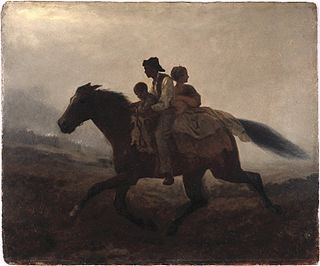
In the United States, fugitive slaves or runaway slaves were terms used in the 18th and 19th century to describe enslaved people who fled slavery. The term also refers to the federal Fugitive Slave Acts of 1793 and 1850. Such people are also called freedom seekers to avoid implying that the enslaved person had committed a crime and that the slaveholder was the injured party.

John P. Parker was an American abolitionist, inventor, iron moulder and industrialist. Parker, who was African American, helped hundreds of slaves to freedom in the Underground Railroad resistance movement based in Ripley, Ohio. He saved and rescued fugitive slaves for nearly fifteen years. He was one of the few black people to patent an invention before 1900. His house in Ripley has been designated a National Historic Landmark and restored.

The fugitive slave laws were laws passed by the United States Congress in 1793 and 1850 to provide for the return of enslaved people who escaped from one state into another state or territory. The idea of the fugitive slave law was derived from the Fugitive Slave Clause which is in the United States Constitution. It was thought that forcing states to deliver freedom seekers back to enslavement violated states' rights due to state sovereignty and was believed that seizing state property should not be left up to the states. The Fugitive Slave Clause states that freedom seekers "shall be delivered up on Claim of the Party to whom such Service or Labour may be due", which abridged state rights because forcing people back into enslavement was a form of retrieving private property. The Compromise of 1850 entailed a series of laws that allowed enslavement in the new territories and forced officials in free states to give a hearing to slave-owners who enslaved people without a jury.
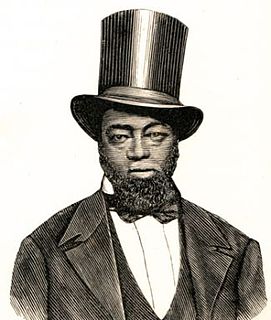
Samuel D. Burris was a member of the Underground Railroad. He had a family, who he moved to Philadelphia for safety and traveled into Maryland and Delaware to guide freedom seekers north along the Underground Railroad to Pennsylvania.

The 92nd Regiment Illinois Infantry, also known as 92nd Illinois Mounted Infantry Regiment, was an infantry and mounted infantry regiment that served in the Union Army during the American Civil War.
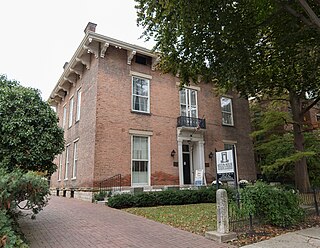
The Kelton House Museum and Garden is a Greek Revival and Italianate mansion in the Discovery District of downtown Columbus, Ohio. The museum was established by the Junior League of Columbus to promote an understanding of daily life, customs, and decorative arts in 19th-century Columbus and to educate visitors about the Underground Railroad.
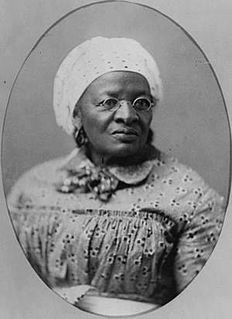
Mary Meachum (1801–1869) was an American abolitionist who, with her husband John Berry Meachum, helped enslaved people escape to freedom in the Underground Railroad, and by purchasing their freedom. The Mary Meachum Freedom Crossing in St. Louis, the first site in Missouri to be accepted in the National Park Service's National Underground Railroad Network to Freedom, was named after her.
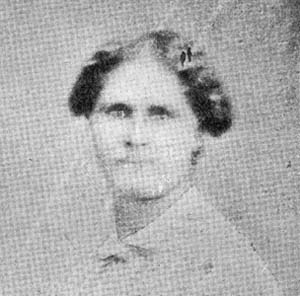
Caroline Quarlls (1826–1892) was the first enslaved person to travel through Wisconsin using the Underground Railroad. She reached Canada and freedom in 1842. Multiple abolitionists helped Caroline on her journey to Canada even as pursuers followed continuously.

The Underground Railroad is an American fantasy historical drama streaming television limited series created and directed by Barry Jenkins based on the 2016 novel of the same name by Colson Whitehead. The series premiered on Amazon Prime Video on May 14, 2021.

Anna Maria Weems also Ann Maria Weems was an American woman known for escaping slavery by disguising herself as a male carriage driver and escaping to Canada, where her family was settled with other slave fugitives.

Peter Fossett was an enslaved laborer at Monticello, Thomas Jefferson's plantation, who after he attained his freedom in the mid-1800s, settled in Cincinnati where he established himself as a minister and caterer. He was a captain in the Black Brigade of Cincinnati during the Civil War. Fossett was an activist for education and prison reform. He was a conductor on the Underground Railroad. His remembrances, Once the slave of Thomas Jefferson, were published in 1898.

History of slavery in Colorado began centuries before Colorado achieved statehood when Spanish colonists of Santa Fe de Nuevo México (1598–1848) enslaved Native Americans, called Genízaros. Southern Colorado was part of the Spanish territory until 1848. Comanche and Utes raided villages of other indigenous people and enslaved them.
The Dover Eight refers to a group of eight black people who escaped their slaveholders of the Bucktown, Maryland area around March 8, 1857. They were helped along the way by a number of people from the Underground Railroad, except for Thomas Otwell, who turned them in once they had made it north to Dover, Delaware. There, they were lured to the Dover jail with the intention of getting the $3,000 reward for the eight men. The Dover Eight escaped the jail and made it to Canada.
Isaac S. Flint was an Underground Railroad station master, lecturer, farmer, and a teacher. He saved Samuel D. Burris, a conductor on the Underground Railroad, from being sold into slavery after having been caught helping runaway enslaved people.

Ann Maria Jackson was an enslaved woman with nine children ran away from her enslaver in November 1858, after two of her eldest children had been sold away. Her husband became mentally ill and he died in a poor house. Another four of her children were threatened to be sold. She gathered the seven children who were with her and traveled along the Underground Railroad for Canada. The Jacksons established lives for themselves in Toronto. Her two eldest children reunited with the family. Her youngest, Albert Jackson, became the first African American to work as a letter carrier in Toronto. Later, the two eldest children connected with the family in Toronto.
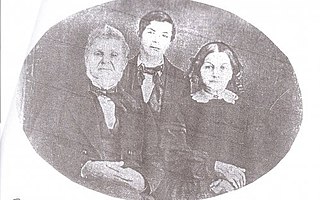
Merlin Mead was an Underground Railroad conductor and station master, one of several people from the hamlet of Cadiz within Franklinville, New York that sheltered and aided enslaved people who escaped and headed for freedom in Canada. He was a farmer, schoolmaster, town clerk, postmaster, and justice of the peace. He operated a public house, until he attended a temperance meeting and stopped selling liquor. Mead was ordained an elder and was an active leader of the First Presbyterian Church in Franklinville.

















